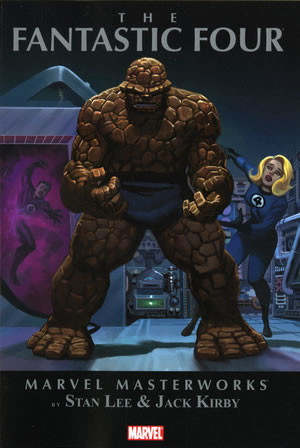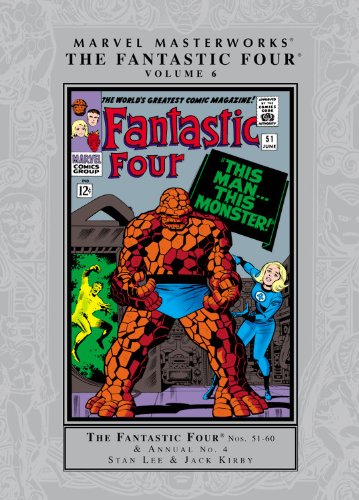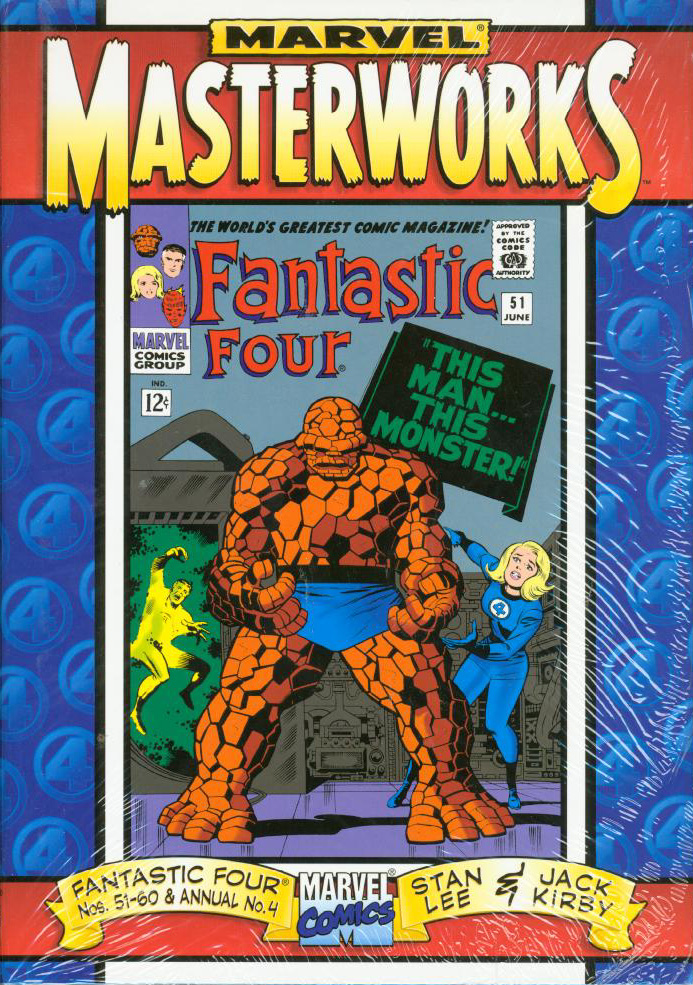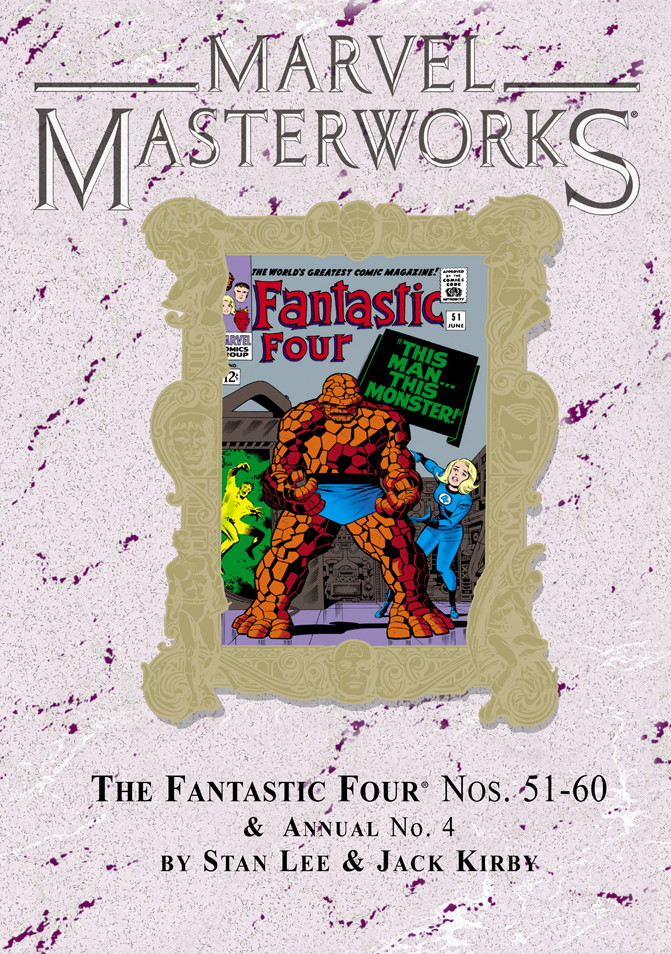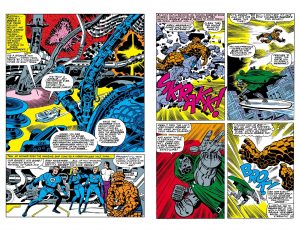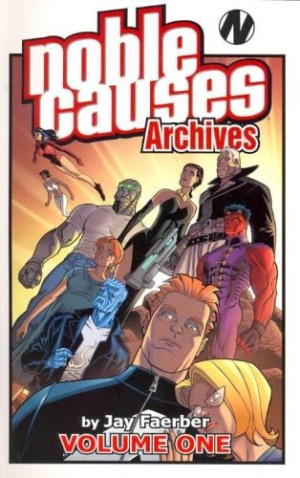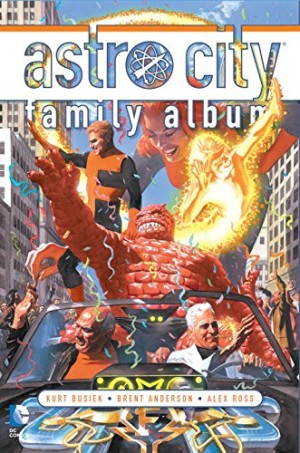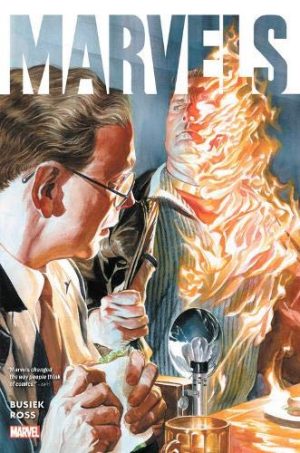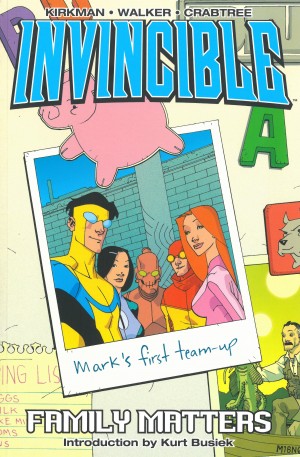Review by Graham Johnstone
Stan Lee and Jack Kirby’s run on Fantastic Four spanned most of the 1960s. Inspired moments were scattered throughout the run, and the overall quality of story and art steadily improved. The final story in volume five, introducing the planet devouring Galactus and the Silver Surfer, remains one of the most memorable moments in Marvel comics. We come, then, to volume six with raised expectations.
It starts boldly with ‘This Man… This Monster!’, and its splash page of Ben Grimm, alone in the rain: no threats, no foes, no gadgets – Lee and Kirby have the confidence now to foreground a character story. Previous volumes have highlighted the Thing’s wish to again be a man with a normal life. Here a scientist with a grudge against Reed Richards turns himself into the Thing, simultaneously restoring Ben to his human form. It doesn’t proceed as planned for either of them, and the villain of the piece becomes someone different in a quite unexpected way. By this point the stories involve fantastical worlds and dimensions, but at their best they still revolve around individuals and their conflicts.
We then have the introduction of the Black Panther- the first black superhero in mainstream comics, named before the political organisation. He’s hardly urban, however, being the amazingly wealthy ruler of a scientifically advanced African kingdom. Still, along with Invisible Girl, the teenage Torch, and his Native American college room-mate Wyatt Wingfoot, he’s part of a relatively diverse cast, that would have been hard to find in any rival title.
By this time Kirby was conceiving most of the stories, with Lee scripting the final pages. Presumably Kirby was too in demand to waste his time re-drawing, and alert readers can spot where Lee tries to explain, or ‘spin’ things, or ironically acknowledge the absurdity of what’s in the art. Here through the sarcastic Grimm, he mocks the clichés of jungle stories, in the Panther’s backstory. Still, Kirby’s effortlessly brilliant artwork carries it along. Known for kinetic action, he’s also a master of epic interiors, here combining futuristic Kirby with traditional African.
Perhaps sensing their gradually maturing readership, Lee and Kirby deliver an increased focus on romantic relationships. Reed and Sue try to continue their interrupted honeymoon; Ben clashes with lofty extraterrestrial the Silver Surfer over his connection with Alicia Masters. Lastly, the Torch and Wyatt Wingfoot embark on a quest to find and free his crush Crystal – trapped with her fellow Inhumans in their hidden city. The team also face the original Human Torch from the 1940s, revived by the Mad Thinker.
Several issues centre on Dr Doom, despotic monarch of a fictitious European country, who’s tapped the Silver Surfer’s reality-changing power. He turns the sky black, terrifying ‘his’ people, freezes a Mediterranean island, just to see if he can, and casually destroys attacking fighter planes by turning the air around them into corrosive gas. Even the Fantastic Four are forced into a humiliating surrender to buy some time.
The extended action sequence starting the previous volume seemed overlong, a chore to read, but this time it’s genuinely gripping, with team members in turn bravely and resourcefully standing alone against Doom. Lee and Kirby have an impressive ability to hook the reader in, and convince them the protagonists are strained to their limits.
Joe Sinnott’s inks make Kirby’s art the best so far, and the stories do what they do with humanity and panache.
The content is also available within the oversize hardback Fantastic Four Omnibus volume two, and the black and white pulp paper of Essential Fantastic Four volume three.
